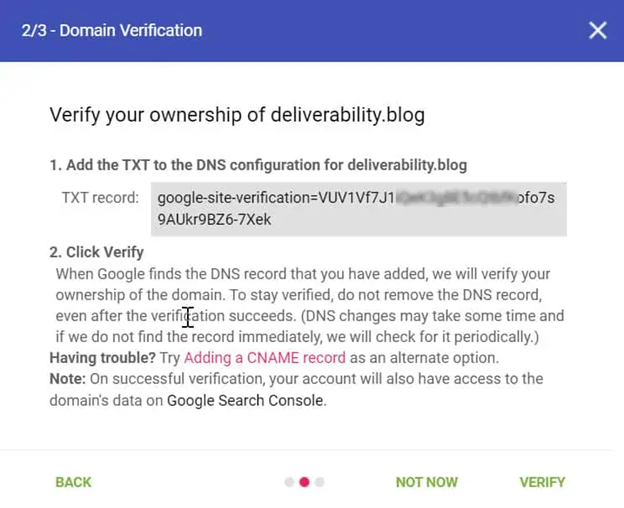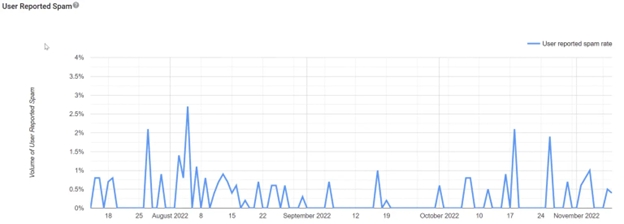Deliverability Insights for All (and they’re free)
Imagine driving your car with the dashboard covered. You see the road ahead but can't see or hear any warnings or indicators telling you something is wrong with your car. There is no speedometer telling you that you are speeding. There is no way to know if the engine is overheating or if there's sufficient tire pressure. Scary.
It's the same with email deliverability.
Email marketing platforms and marketing automation are excellent tools (in this article, I will refer to both as "ESPs"). Still, they typically don't display any deliverability metrics (no, delivery is not the same as deliverability). Doing email marketing without deliverability metrics is like driving a car with a covered dashboard, unaware that something is wrong. We don't know when our emails land in the spam or junk folder. In many cases, we are already stuck when we become aware of the issue.
What is email deliverability?
In general, it describes the ability of email senders to reach recipients' inboxes. Email senders often see the delivery metrics (quantity sent minus the number of bounces) and wrongly think their email deliverability is good (delivery is not deliverability). A high delivery rate doesn't necessarily mean emails are delivered to the recipient's inboxes.
In the dashboard of ESPs there is information about email performance, such as how many recipients opened emails, clicked on emails, etc. However, the fact is that 99.99% of ESPs do not display data about deliverability status. Also, there is a gap in how the information is presented on every ESP, with some needing to catch up and adapt their metrics to Apple's mail privacy protection (MPP).
Own your deliverability
The first step for every email marketeer is taking ownership of their deliverability by using a properly authenticated domain or sub-domain. If you see “via” or “on behalf” when sending emails from your ESP, that indicates that you are using the ESPs domains and not your own domain. I'm surprised to see how many marketers skipped that first step.
A word of caution: email authentication is not as easy as it sounds, so seek help if you are unsure what to do. You can easily break things and get blocked.
The first step is to get SPF and DKIM records from your ESP and implement them in the domains’ DNS. Use a free tool like kbxscore.com to check the authentication. After you have successfully authenticated your domain, you will need to warm the domain.
You can send emails without DMARC. It's a domain authentication protocol created to protect domains and brands. DMRC will help with deliverability only if implemented correctly, and It's an evolution that usually takes several months to achieve an enforcement policy. I recommend implementing DMARC with an external tool that will help you get DMARC reports and guide you through the DMARC policy's evolution (p=none will not improve deliverability).
Where can I find my deliverability metrics?
Yes, deliverability monitoring tools are available; however, they can be expensive and often require the assistance of deliverability consultants to know what to do with the findings.
External deliverability monitoring tools allow senders and deliverability consultants to obtain data that cannot be obtained inside the ESP and enable them to assess the state of deliverability, identify problems, be ahead of deliverability issues, and work to resolve them. The tools do not solve the problems they only monitor and alert.
Hidden deliverability metrics inside every ESP
Even without deliverability monitoring tools, some metrics inside ESPs can act as a “canary in a coal mine,” indicating deliverability issues may arise.
Email marketing practices senders employ will affect their deliverability.
Do you segment your subscriber's data or email the entire list (blast)? Are you mailing the same offer or the same template to everyone? Are you sending to old records? Are you reaching out to audiences that haven't shown any engagement in the ESP for a long time? These are just some examples of email marketing practices that can influence deliverability.
As mentioned, while it is impossible to see deliverability metrics directly in the ESP itself, some metrics can hint that something is wrong and hurting your deliverability.
Before diving into the metrics, it is essential to understand how they are displayed in your ESP. The data is presented differently in different ESPs, and it may be more challenging to obtain the information needed in some.
Metrics to Monitor
Unique Open Rate
Ensure that your ESP calculates Unique Open Rate as follows:
Unique Open Rate = Unique Opens / Success*
*Success = Emails sent minus emails that bounced back (bounces)
This refers to unique open rates. It is a good idea to check how your ESP measure opens related to Apple's MPP. Many ESPs ignore it, don't address this important change, and show inflated open rates, which are less accurate open metrics.
Considering Apple's privacy change, good open rates will be above 25%, and open rate of less than 10% will indicate that it needs improvement.
In any case, look at the trends in open metrics.
Unique Click-through Rate (uCTR)
Ensure your ESP calculates the uCTR as: Unique click-through rate = Unique Clickers / Success.
This refers to the unique click rates of the emails that did not bounce.
A good uCTR is considered above 2.5%, and a uCTR of less than 1.5% will need improvement.
Bounce Rate
Ensure your ESP calculates the bounce rate as: Bounce Rate = Bounces / Total Sent.
Good bounce rates are below 0.4%, and more than 1.5% will need improvement.
There is a difference between the type of bounce (soft or hard) in the context of deliverability.
Note that sometimes a high soft bounce rate may indicate that your emails are being blocked.
It's a good idea to work to prevent hard bounces. A useful mail validation tool (such as Webbula, Kickbox, and others) will help mitigate the risk of sending emails to inactive addresses which will return a hard bounce.
Unsubscribe rate
Ensure your ESP calculates the data like this: Unsubscribe rate = Unsubscribes / Success
We always prefer recipients to unsubscribe from our mailing list rather than report spam, so it's important to allow easy and clear unsubscribing and highlight the unsubscribe button or link.
Spam complaint rate
Many ESPs don't display this data: Spam complaint rate = (Complaints / Success)
In some ESPs, the displayed data may not reflect how mailbox providers such as Gmail view the data. You might be using multiple ESPS under the same domain. Therefore, it's also worth looking at the Google Postmaster Tool (more on that in the next section) to see the wider picture.
A good spam complaint report rate is considered to be 0.05% or less, which means that one report is received for every 2,000 recipients. If your spam complaint rate is more than 0.15% you will need to improve it.
If users report your email as spam, you should check your email templates. Are they clear? Is there a clear unsubscribe option? Are you sending emails to users who want to get your emails?
Google Postmaster Tools
Despite its limitations, Google Postmaster Tools is a basic and free tool every email sender can (and should) use to receive basic deliverability data for the dominant email domain gmail.com. The data is limited and only shows a history of the past 120 days. It's always a good idea to keep a snapshot (or the actual raw data via API) to understand the longer-term trend in the metrics.
Connecting Google Postmaster Tools to your domain requires adding a TXT record to the domain’s DNS.

Note that often there is a gap between spam reporting inside the ESPs and how Google calculates it.

In summary
Although it is difficult to get an up-to-date picture of the deliverability situation without deliverability monitoring tools, maintaining healthy metrics that can be seen within the email system dashboard and Google Postmaster Tools reduces the chances of encountering deliverability issues.
For more on email metrics, see the OImetrics website
Although it is difficult to get an up-to-date picture of the deliverability situation without deliverability monitoring tools, maintaining healthy metrics that can be seen within the email system dashboard and Google Postmaster Tools reduces the chances of encountering deliverability issues.

 How to resolve AdBlock issue?
How to resolve AdBlock issue? 
